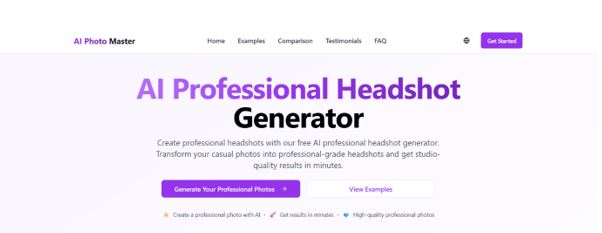Discover How Small Businesses Save 40% with These Powerful Connecteam Alternatives
In today’s fast-paced business landscape, small companies constantly seek ways to cut costs while boosting efficiency. Recent findings reveal that many are achieving remarkable savings of up to 40% simply by switching from Connecteam to powerful alternatives. This shift isn’t just about saving money; it’s about unlocking new features and tools that enhance productivity and streamline operations.
As small businesses navigate challenges, the right software can make all the difference. Exploring these alternatives opens doors to tailored solutions that better fit unique needs. With the right insights, entrepreneurs can make informed decisions that lead to significant savings and improved workflows.
Understanding the Need for Alternatives
Small businesses continually seek ways to remain competitive, often facing numerous challenges in the process. These companies must navigate tight budgets, limited resources, and the increasing demand for efficient workflows. Many struggle with high operational costs, which can hinder growth and innovation. Finding suitable solutions that address specific operational needs proves critical for these businesses to thrive in a demanding market.
The Challenges Faced by Small Businesses
Small enterprises encounter significant obstacles such as high overhead expenses, ineffective communication tools, and inadequate software capabilities. Budget constraints often prevent them from investing in comprehensive solutions, leading to reliance on subpar systems. Additionally, the pressure to maintain productivity while managing staff across various locations amplifies difficulty. These factors contribute to decreased employee morale and can result in increased turnover. Without effective tools that facilitate communication and collaboration, small businesses may find it challenging to optimize their performance and service delivery, thereby impacting their competitive edge.
Potential Cost Savings
Switching to more cost-effective software can lead to substantial financial benefits for small businesses. Recent studies indicate that businesses can achieve savings of up to 40 percent by adopting alternative solutions. These savings typically come from reduced subscription fees, streamlined processes, and improved resource management. Investing in more suitable tools often results in enhanced functionalities that cater to specific operational needs. This enables businesses to eliminate redundant tasks, minimize operational waste, and reallocate resources more effectively. Ultimately, the shift not only amplifies savings but also fosters a more agile and productive work environment.
Overview of Connecteam
The platform offers a suite of tools aimed at improving workforce management and communication for companies. It specializes in features that facilitate task management, employee scheduling, and time tracking. These functionalities allow businesses to streamline operations and enhance team collaboration.
Key Features of Connecteam
Key offerings include mobile apps for task assignment, real-time chat, and document sharing. The built-in scheduling tool simplifies shift management, while time-tracking features enable accurate payroll processing. Users can access customizable templates for reports and surveys, fostering better feedback and engagement. Integration capabilities with popular third-party applications enhance its utility, lending businesses greater flexibility in their operations.
Limitations of Connecteam
Some users report challenges with the platform’s user interface, noting that it can feel cluttered and complex. Additionally, while many of the features are robust, certain tools lack depth compared to specialized software. The subscription costs may become burdensome for smaller enterprises, especially if their needs do not align well with available functionalities. Customer support responses can vary, which might lead to frustrations when immediate assistance is necessary.
Top Powerful Alternatives
Several Connecteam alternatives provide small businesses with robust features designed to enhance operations and reduce costs. These options offer efficient tools that cater to various needs, streamlining workflows and improving communication.
Alternative 1: Buddy Punch
Buddy Punch is an all-in-one workforce management app that offers everything from time tracking to employee scheduling to payroll, including a built-in payroll app to replace third-party software. Its intuitive interface and robust reporting features make it easy to monitor hours, approve time-off requests, and run payroll all in one place. For more on how it stacks up against Connecteam, check out this comparison: https://buddypunch.com/blog/connecteam-alternatives/
Alternative 2: Monday.com
Monday.com offers a highly customizable platform tailored for project management and team collaboration. Users can create workflows that suit their specific needs, from task tracking to employee scheduling. The visual interface simplifies navigation and project overviews, promoting better team alignment. Its integration capabilities with popular applications allow seamless data flow across different tools. Competitive pricing structures for small businesses make it an attractive choice, ensuring access to comprehensive management features without draining budgets.
Alternative 3: Asana
Asana stands out as a versatile task and project management tool, enabling teams to organize and prioritize their work efficiently. Users appreciate its intuitive design that facilitates easy tracking of tasks and deadlines. Collaboration features, including shared boards and communication tools, enhance team engagement and clarity on project status. Advanced reporting options provide valuable insights into productivity metrics, further assisting managers in decision-making. The tiered pricing approach offers flexibility, catering to the unique demands of growing businesses.
Alternative 4: Trello
Trello employs a card-based system for project organization that resonates well with many teams. This visually appealing method allows users to drag and drop tasks through various stages of completion. The simplicity of its interface makes onboarding quick and easy, reducing the learning curve. Trello’s add-ons and automation features also enhance productivity by integrating with other tools to streamline processes. With a free tier and affordable premium plans, it serves as an economical solution for smaller enterprises aiming to improve their task management.
Comparing Features and Pricing
Small businesses benefit from evaluating software alternatives based on their features and pricing. This assessment empowers entrepreneurs to select options that fit their operational needs.
Feature Set Comparison
Different software platforms provide a variety of tools tailored to enhance efficiency. Task management capabilities include assigning and tracking tasks to ensure accountability. Real-time collaboration features allow teams to communicate seamlessly through chat and file sharing. Reporting tools offer insights into team performance, helping managers make data-driven decisions. Customizability plays a significant role, enabling users to adapt dashboards and workflows to meet their specific requirements. Each platform’s scalability supports growing teams, ensuring that as businesses expand, their software solutions remain adequate and effective.
Pricing Analysis
Cost structures vary significantly among the software options available. Subscription plans typically range from $8 to $25 per user per month, with different tiers offering distinct features. Some providers allow users to save further by opting for annual billing instead of monthly payments. Trial periods enable small businesses to test functionality without committing to significant upfront investments. Competitive pricing models also offer basic features at a lower cost, allowing companies to adopt solutions that align with their budgets. Overall, evaluating these aspects helps businesses achieve both financial and operational efficiencies.
User Experiences and Testimonials
Feedback from users emphasizes the significant advantages of switching software platforms. Many report a marked improvement in overall efficiency and communication among team members. Users appreciate intuitive interfaces that simplify task management and enhance collaboration. For example, companies have noted increased employee satisfaction and productivity due to streamlined workflows. Reports highlight reduced time spent on administrative tasks, allowing teams to focus on core business objectives. Overall, the positive experiences shared by users suggest that selecting the right software can lead to enhanced operational success. In the same vein, significant investments in technology, such as OpenAI’s $200 million Pentagon deal, highlight the growing role of AI in streamlining operations and improving efficiencies across industries, proving that technological advancements can drive substantial operational benefits.
Despite the numerous benefits recognized, some areas present opportunities for improvement. Users have pointed out that certain features may require refinement for optimal functionality. A few noted that integration with existing systems occasionally poses challenges, impacting the overall user experience. Additionally, some platforms lack comprehensive training resources, which can hinder thorough onboarding for new users. Feedback indicates that improved customer support and response times would significantly enhance user satisfaction. Addressing these areas can further bolster the transition experience for small businesses seeking to improve their operational efficiency.
Conclusion
Switching to more effective software alternatives can be a game-changer for small businesses. By making this transition, companies can not only save up to 40% on costs but also enhance their operational efficiency. The right tools empower teams to collaborate better and streamline workflows, addressing the challenges of high operational costs and limited resources.
As small businesses navigate the competitive landscape, choosing the right software tailored to their unique needs is essential. By evaluating various options and leveraging user-friendly platforms, entrepreneurs can foster a more productive work environment. Ultimately, embracing these powerful alternatives can lead to significant financial and operational benefits, setting the stage for sustained growth and success.




